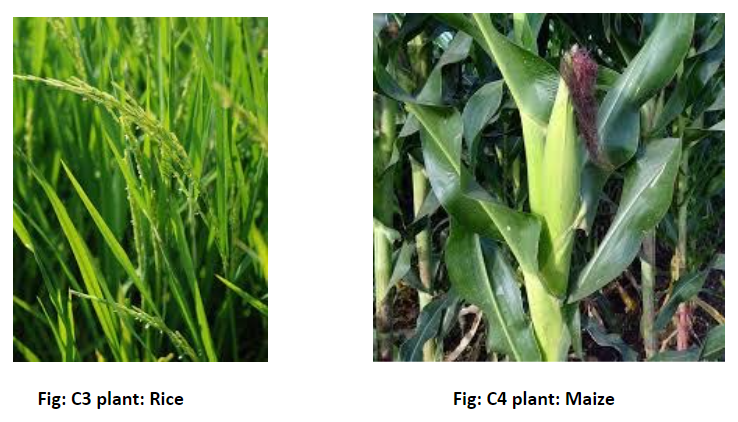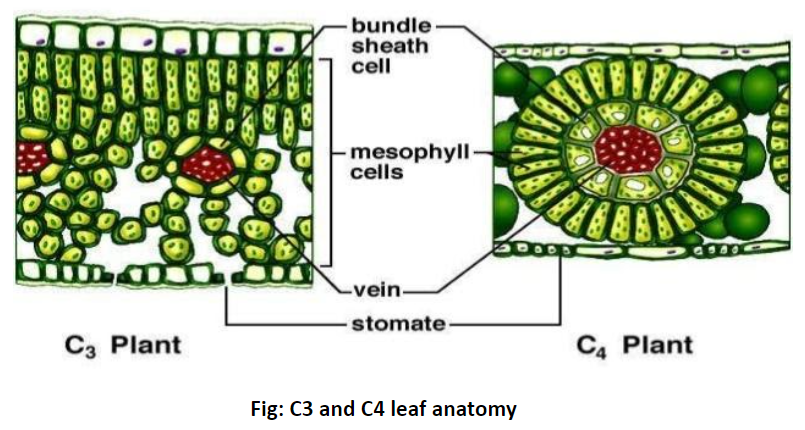Question
Question: The exceptional difference between C3 and C4 plants is exhibited by the phenomenon A. Photosynthes...
The exceptional difference between C3 and C4 plants is exhibited by the phenomenon
A. Photosynthesis
B. Photorespiration
C. Transpiration
D. Crassulacean metabolism
Solution
Transpiration is a very common phenomenon of water transport and photosynthesis is seen in all green plants. Crassulacean metabolism is seen in special types of plants that are usually seen in hot climate regions or places with high temperatures. Now, try to analyze where C3 and C4 plants are seen.
Complete answer: 1. In C3 plants, O2 is driven directly into the Calvin cycle and leaves RuBisCO (Ribulose bisphosphate carboxylase/oxygenase) exposed to O2.
2. RuBisCO then takes up O2 and reacts with ribulose bisphosphate (RuBP) to produce 2-phosphoglycolate and 3-phosphogyceric acid. This whole reaction takes place in the chloroplast. The product 2-phosphoglycolate is a very toxic product and is of no use of plants. So, it undergoes certain chemical reactions to produce 3-phosphoglyceric acid.
3. The next set of reactions takes place in peroxisome and mitochondria where 2-phosphoglycolate converts to glycine and glycine convert to serine respectively.
4. The serine then comes to the peroxisome and converts to glycerate and this glycerate enters to chloroplast and produces 3-phosphogyceric acid.
5. Photorespiration occurs when concentrations of CO2 is low and concentrations of O2 is high.

6. C4 plants capture CO2 is primarily captured by phosphoenolpyruvate or PEP in mesophyll cells to form oxaloacetate. This oxaloacetate is then converted to malate and transported to the bundle sheath cells, where oxygen concentration is low and releases CO2, which is then taken up in the Calvin cycle. This mechanism is adopted by C4 plants to avoid photorespiration.
7. Photosynthesis is seen in all the green plants that have chlorophyll.
8. Transpiration is also seen in all plants to transport water that is absorbed from the soil by the root to the other parts of plants.
Crassulacean metabolism or CAM is only seen in Crassulaceae family plants, such as cactus.
So, the correct answer is option B. photorespiration.

Note: Transpiration takes place by xylem cells. Photorespiration takes place in chloroplast, peroxisome, and mitochondria. CAM pathway takes place in mesophyll cells during day and night. In C4 plants the CO2 trapping and metabolism take place in both mesophyll cells and bundle sheath.
